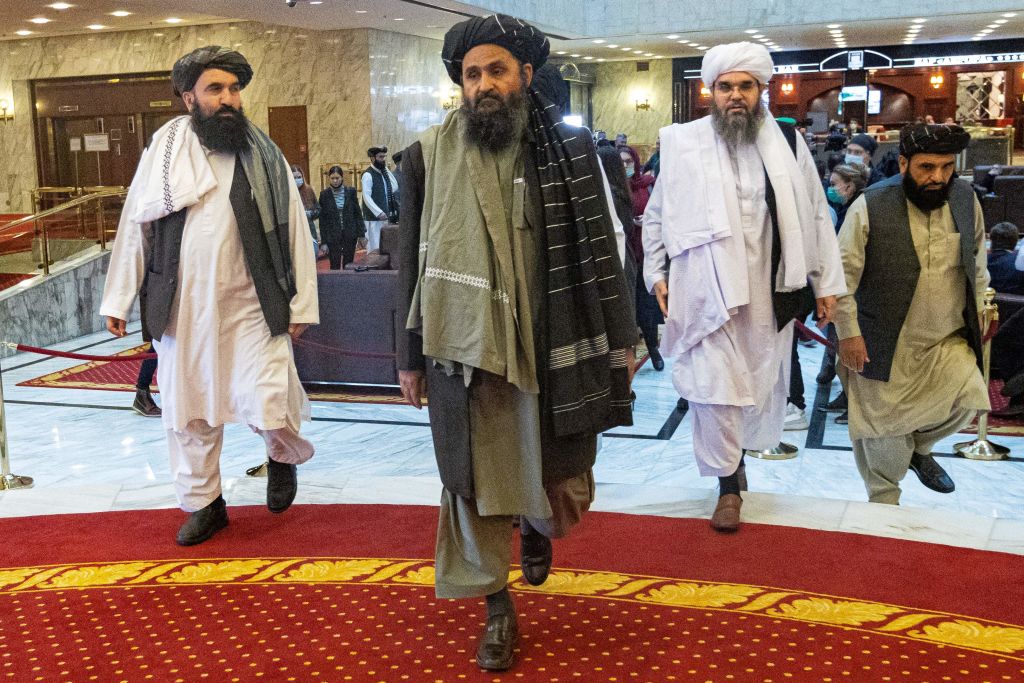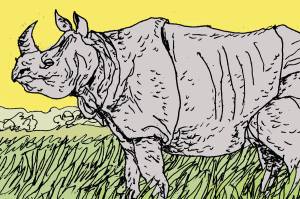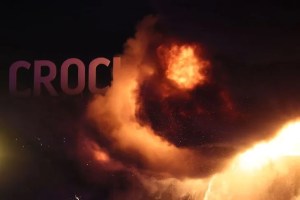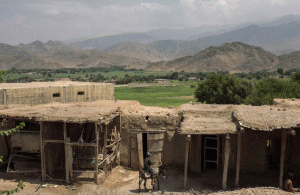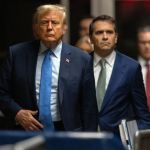The office of the Afghan president, the Arg, sits in more than 80 acres of parkland, quadruple the size of the White House estate, and more than twice the size of Buckingham Palace grounds. Since it was built in the late 18th century, most of its occupants have died violently in one of the elegant buildings, built inside a large square compound of thick stone walls as a copy of an ancient fortress.
But there has rarely been a scene like the one earlier this month, following the visit to Kabul of the head of Pakistan’s intelligence service, the ISI, Lt. Gen. Faiz Hameed. He had come to Kabul to impose Pakistan’s will on the shape of the new Taliban government. He ensured that all of the key positions went to Pakistani loyalists, principally from the hardline Haqqani network, while those who led the Doha negotiations were downgraded.
The principal loser was Mullah Baradar, who had expected to run the government, but was instead given a deputy’s role. He wanted more roles for Afghanistan’s many ethnic minorities in the government, and has also argued that the green, red and black Afghan national flag should still be flown alongside the white Taliban flag. Tempers flared in a meeting in the Arg and spilled over into a fight between his supporters and those of Khalil Haqqani. Furniture and large thermos flasks full of hot green tea were thrown. Some accounts said there was gunfire, although this has not been verified.
Following the fight, Baradar disappeared for some days, resurfacing in Kandahar, where he remains. He has held a large meeting of tribal elders who support him, but at the same time was forced to read a statement on the state-run TV network, which has been taken over by the Taliban. In the statement he professed loyalty, but observers said it looked like a hostage video.
While these very public disagreements have been played out, the whereabouts of the leader of the Taliban, Haibatullah Akhunzada, are not known. He has not been seen or heard from for some time, and there are many rumors that he is dead. This vacuum at the top has allowed for arguments between the Taliban factions to erupt in a way that they did not when the Taliban were last in power, and the word of the leader of the movement Mullah Omar was law, even though he never came to Kabul. The titular head of the government formed earlier this month, Mullah Hassan Akhund, does not hold real power. So there is no one to rein in the Haqqani network, who are very much off-message in their public statements.
While Baradar and others in Doha have been part of a slick public relations effort going back some years in an effort to portray the Taliban as a moderate nationalist movement, waiting to form a responsible government, Sirajuddin Haqqani has praised suicide bombers, and his uncle Khalil has made a number of public statements since they took power about the value of international jihad.
Whatever promises the Taliban may have made to the American government to secure the withdrawal of international troops, there is little doubt of Khalil’s closeness to international terrorist organizations. He is charged on the UN sanctions list with acting ‘on behalf of al-Qaeda and has been linked to its military operations.’
The Haqqani network are deeply embedded into Pakistan’s security apparatus. They take their very name from the ‘university of jihad,’ the Darul Uloom Haqqania madrassa, which sits prominently on the main road between Pakistan’s capital Islamabad and the tribal regions on the frontier with Afghanistan. Many of the Taliban’s main players, from the founder Mullah Omar onwards, were graduates of this madrassa.
It is difficult to predict how Pakistan will manage their new power in Afghanistan. They have been trying to have this level of influence since the Soviet invasion more than 40 years ago, but like a dog chasing a car, appear uncertain what to do now they have caught it. One of only three countries to recognize the Taliban as the government of Afghanistan in the late 1990s, (the others were Saudi Arabia and the United Arab Emirates), Pakistan appears unwilling to go out on a limb ahead of other countries in recognition this time.
In a speech to the Shanghai Cooperation Organization conference this week, Pakistani prime minister Imran Khan played the victim card once again, saying that Pakistan had faced the worst attacks in the region from cross-border terrorism. This has to be read against the context of Pakistan’s support for groups specifically set up to carry out terrorist attacks in India, and their support now for the Haqqani network, who are again threatening Kashmir.
The full implications of the fight in the heart of the new Afghan government have not yet played out, but reveal an instability that make it hard to imagine that this administration has the capacity to run the complex country that Afghanistan has become.
This article was originally published on The Spectator’s UK website.
